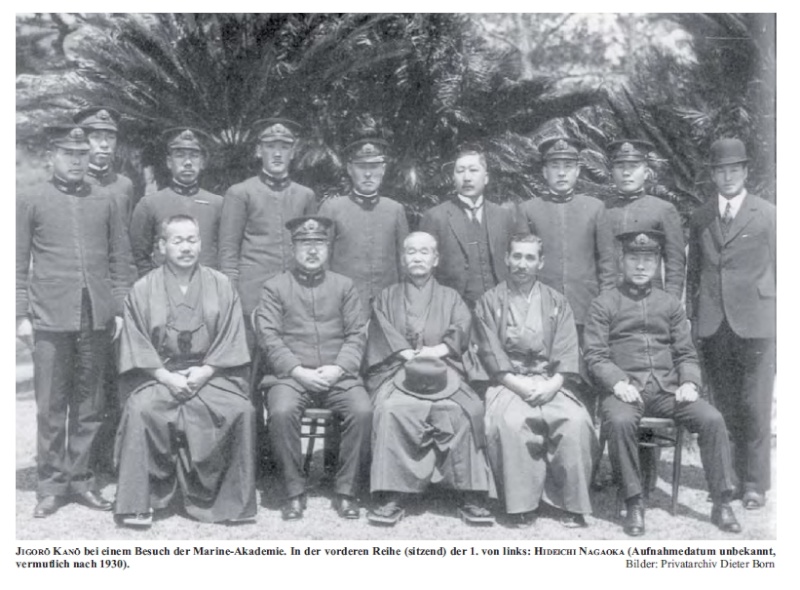 by NBK Tue Apr 26, 2016 7:22 pm
by NBK Tue Apr 26, 2016 7:22 pm
History has mostly forgotten Admiral Matsushita, but in 1932 he proposed the following creed, which is still recited daily by the cadets at the Japanese Navy School at Etajima. Kanô shihan would love this stuff, so I wouldn't doubt that somehow this is related, and he wrote about it. I can't find it quickly, but it's probably someplace.
The Five Reflections
Origin:
The five reflections, or “Gosei” in Japanese, were given to the Imperial Japanese Naval Academy at Etajima in 1932 by Rear Admiral Matsushita, then superintendent of the school. The five reflections are often borrowed by organizations that teach and practice Budo because of their applicability to the practice of martial arts and to spiritual and physical refinement/endeavor.
Japanese Translation:
Hitotsu, shisei ni motoru, nakarishika (Have I compromised my sincerity?)
Hitotsu, genkou ni hazuru, nakarishika (Have I spoken or acted shamefully?)
Hitotsu, kiryoku ni kakuru, nakarishika (Have I been lacking in spiritual vigor?)
Hitotsu, doryoku ni urami, nakarishika (Must I regret the level of my effort?)
Hitotsu, bushou ni wataru, nakarishika (Have I lapsed into laziness?)
Explanation:
Each of the reflections begins with the word “One.” In Japanese, mottos and proclamations follow this form, rather than listing elements “one, two, three,…” The significance of this point is to understand that all of these precepts are equally important. None are subordinated to another.
Each reflection ends with the expression, “nakarishika,” a classical Japanese expression meaning “have I not?,” which is close in flavor to the English, “hast thou not?”
Shisei ni motoru - Compromised sincerity
Have there been times when I thought, “I must do such and such,” but allowed the feeling of responsibility pass without following through?
Genkou ni hazuru - Shame of words and actions
Am I guilty of making statements that are inconsistent with my actions?
Do I practice what I preach? Have I reneged on verbal commitments?
Kiryoku ni kakuru – Lacking Spiritual Vigor
Has my spiritual strength been adequate? Have I treated any of my endeavors as being of less than primary importance?
Doryoku ni urami – Regret effort level
Have I tried hard enough? Are there cases in which I have decided ahead of time that I cannot be successful, and hence not applied myself and given up?
Bushou ni wataru – Lapse into laziness
Have I given 100% effort until the very end in all my endeavors? Have I decided “what I have done so far is good enough,” and left important things un-addressed?
Use of the Five Reflections in One's Practice:
At the completion of mokusou at the end of practice, one will recite the Gosei in Japanese. As one recites the reflections, one should think about one's practice that day, and think about whether one can sincerely answer no to each of the questions the reflections address.
Mokuso (黙想, mokusō?) is a Japanese term for meditation, especially when practiced in the traditional Japanese martial arts. Mokuso (pronounced "moh-kso") is performed before beginning a training session in order to "clear one's mind", very similar to the zen concept of mushin. This term is more formally known to mean, "Warming up the mind for training hard."
http://justamarine.blogspot.com/2012/10/the-five-reflections-origin.html









